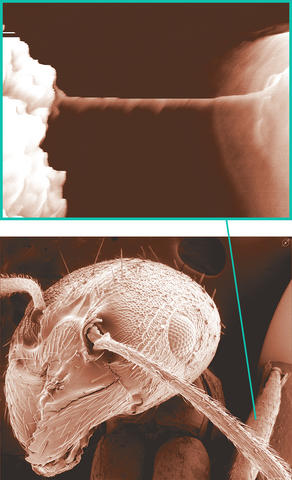Nanotechnology—Environment, Health and Safety Measurements & Standards
(+$12 million)
Challenge

Products made with nanometer-scale components and materials—a thousand times thinner than a human hair and smaller—are already dramatically improving the performance of current products from stain-resistant pants to fuel-efficient aircraft. Many more applications beckon such as targeted cancer drugs, ultrafast electronics, and improved diagnostic tools for medicine.
The small size of these components produces new properties not seen in larger-scale "bulk" materials. While nanomaterials promise many useful applications, very little is known about the environmental, health, and safety (EHS) risks associated with them. The safety or toxicity of nanomaterials can be determined only with well-understood materials and well-defined testing methods.
The bottom line is that hundreds of products already contain nanoscale components and materials and the safety of these products is unknown. As a result, industry is increasingly concerned about future potential liability issues. Regulatory agencies lack the basic scientific information they need to protect the public. In light of these concerns, the scientific community fears that the next breakthrough in nanotechnology may be smothered by uncertainty before it has a chance to be born.
Proposed NIST Program
The interagency National Nanotechnology Initiative has designated NIST as the lead federal agency to develop metrology tools and methods for measuring and characterizing nanomaterials. NIST has the interdisciplinary physical-science expertise and the facilities needed to develop accurate, validated methods for understanding the EHS properties of nanoscale materials.
Initiative funding will allow NIST to launch a three-pronged approach to the problem:
- create a classification scheme for determining the characteristics of nanoparticles necessary for assessing toxicity, including size, shape, and chemical composition;
- develop detection and measurement methods for quantifying the number and nature of nanoparticles with EHS impact in biological and environmental samples; and
- predict how modifications to nanoparticles will affect their impact on the environment, health, and safety.
Expected Impacts
NIST work in this area will allow:
- industry to accurately measure the quantities, types, and potential EHS risks of nanomaterials and manufactured products containing them;
- other government agencies to develop appropriate regulations to protect against potential EHS effects of nanomaterials based on reliable data and solid science;
- consumers to confidently buy products using nanomaterials knowing that the EHS effects have been accurately assessed; and
- accelerated industrial innovation that safely exploits the promise of nanotechnology by reducing uncertainty and quickly identifying any potential hazards before they harm workers or the public.

